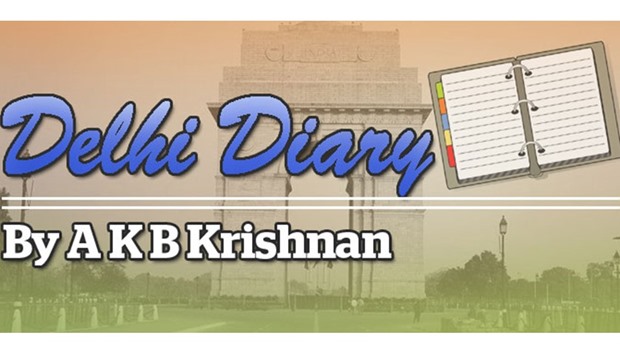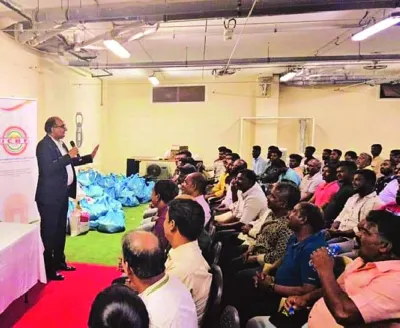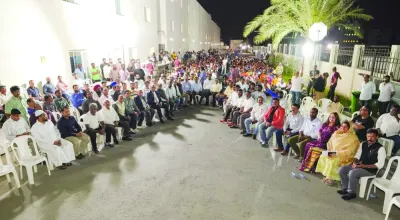“You don’t try to get into the train. The crowd will do it for you. All you have to do is just let the crowd take you. And remember, don’t push and don’t resist a push from behind!”
Being a ‘Dilliwalah’ for most of my working life, my acquaintance with Mumbai and its transport lifeline of suburban rail system, or the ‘local’ as the locals call it, has only been what can be described as nodding. So, when my ‘Mumbaikar’ friend briefed me on how to board the ‘local’, I knew I better follow his advice. And yes, it was a grand success! Although the crowd was overwhelming, I found myself inside the train in a matter of seconds without any damage whatsoever.
Every Mumbaikar knows this trick. Had it not been so, the city would come to a standstill on a daily basis. Close to 2,400 trains move as many as 8mn commuters in mind-numbing frenzy every day. But in the process some of them do get caught on the wrong foot, as it were, and pay with their lives. Last year 3,202 people died in suburban train accidents in Mumbai, most of them self-inflicted as they either get run over while crossing the track, which is officially a ‘no-no’, or slip and fall on to tracks while boarding.
The 23 people who were crushed to death at Mumbai’s Elphinstone station last week were, however, neither trying to board a train nor crossing tracks. They had innocently taken shelter on a foot overbridge from a sudden downpour. It was a small crowd to begin with, but with trains disgorging more and more commuters by the minute, the crowd soon swelled to unmanageable proportions. And then push came to shove as people wanted to avoid getting wet. The result: untimely deaths and unbearable sorrow.
Deadly stampedes are nothing new in India or in other parts of the world. Scores get killed every year in temple and church festivals all across India. The real tragedy is majority of Indians don’t give a damn about safety precautions in general.
The seat belt for the driver and front seat passenger has been made mandatory long since but still a good number of people wear the belts only when they see a policeman. Helmets for the motorcyclist and the pillion rider are also compulsory but even in an educated and upwardly mobile society like Kerala it had created such an uproar that the police chief who introduced the rule had to beat a hasty retreat. And Indian fliers are notorious for the way they flout safety norms by jumping up to open the overhead bins much before “the aircraft has come to a complete halt and the fasten seat-belt signs are switched off.” In short, in an Indian crowd it’s everyman unto himself.
There is no use blaming the railways or the rail minister for what happened at Elphinstone station last week. No planner can anticipate a crowd of 1,000 or thereabouts taking shelter on an overbridge for fear of rain and then find ways to prevent a stampede. The bridge was made for continuous movement of people, not for them to be standing there in huge numbers. The irony is that some of the deaths that had occurred previously near the same station were precisely for the reason that people wanted to avoid climbing up and down the same bridge and, instead, crossed the tracks at ground level only to be run over by trains.
This is not to say that India’s urban infrastructure is all fine and nothing needs to be done. Far from it, there is an urgent need for revamping and upgrading almost all of them, be they roads, bridges, railway tracks and signalling equipment, city bus stations and other civic amenities. It has been the bane of Indians that our successive governments have continuously planned for shortage.
For example, a second class sleeper accommodation in an air-conditioned train from Delhi to Thiruvananthapuram has to be booked months in advance. It has been so for the past 40 years. Thousands of commuters travel all the way from Delhi to Patna atop railcars because there is no room inside them. Some get electrocuted or slip and fall to their deaths in the process, but they only add to the statistics.
It’s perhaps a good thing that Prime Minister Narendra Modi has decided to tackle the situation from a different angle. He has gone in for the bullet train, nothing less. It looks anachronistic for a country to plan for bullet trains when it doesn’t seem to be able to ply ordinary trains on time and without accidents. But then again if the bullet train proves the point that commuting at 300-plus kilometre an hour without accidents is possible, then the rest can hope to catch up one day.
It is also possible that the commuting Indian may change for the better once such facilities are made available. The Delhi metro, for example, carries close to 3mn people a day but remains exceedingly clean unlike the rest of the ordinary rail network in the country. It will have to be a two-pronged effort from the government; providing world class facilities as carrot and simultaneously teaching the public to observe basic rules in safety and cleanliness. If the stick has to be used for the latter, then so be it!
BJP looks to boost
its Bengal chances
In the 1962 Hollywood classic Lawrence of Arabia, the character Auda abu Tayi, superbly played by Anthony Quinn, has a famous line which goes: “I carry twenty-three great wounds, all got in battle… I scatter, I burn my enemies’ tents. I take away their flocks and herds. The Turks pay me a golden treasure, yet I am poor! Because I am a river to my people!”
The analogy may not fit perfectly but the Bharatiya Janata Party (BJP) of Prime Minister Modi comes somewhat close to abu Tayi’s description of self. Modi and his understudy Amit Shah, who heads the party, carry a lot of wounds from political battles. They scatter their enemies without compunction. And like the film character, they make sure the herds and flocks of the enemy are weaned away to their side.
A little over a year ago Hemanta Biswas Sarna was enticed out of the Congress Party in Assam and given charge of overseeing the state assembly elections. And when the coin fell in its favour, the BJP made him deputy chief minister. Earlier this year, N Biren Singh of Manipur was also egged to leave the Congress when the chief minister’s chair was offered to him. Although he has not been given any party or political post yet, Karnataka veteran S M Krishna was gladly welcomed into the BJP fold when he left the Congress. All these and more are part of the Modi-Shah combine’s attempts to “scatter” the enemy.
Both Modi and Shah know that West Bengal’s Mamata Banerjee is a very formidable enemy. They have been waiting for the right time to begin to neutralise her. Looks like the opportunity has suddenly fallen on their laps.
Mukul Roy is not a run-of-the-mill politician who will simply flow with the wind and sit quiet after being thrown out of the party by Banerjee. He had co-founded the Trinamool Congress with Banerjee and, therefore, has as much claim to its legacy as the chief minister. If Mamata is the mass leader, Roy is the master strategist. The protests against the Marxist government of Buddhadeb Bhattarcharjee in Singur and Nandigram that eventually catapulted Mamata to chief ministership was masterminded by Roy who, apart from being vice-president of the party, was also federal minister when Trinamool Congress was part of the Manmohan Singh-led coalition.
Now Roy has been shown the door by Mamata for his alleged “anti-party activities”. The BJP says it will take a call if Roy applies for its membership. Don’t we know which way the wind is blowing?

Delhi Diary


